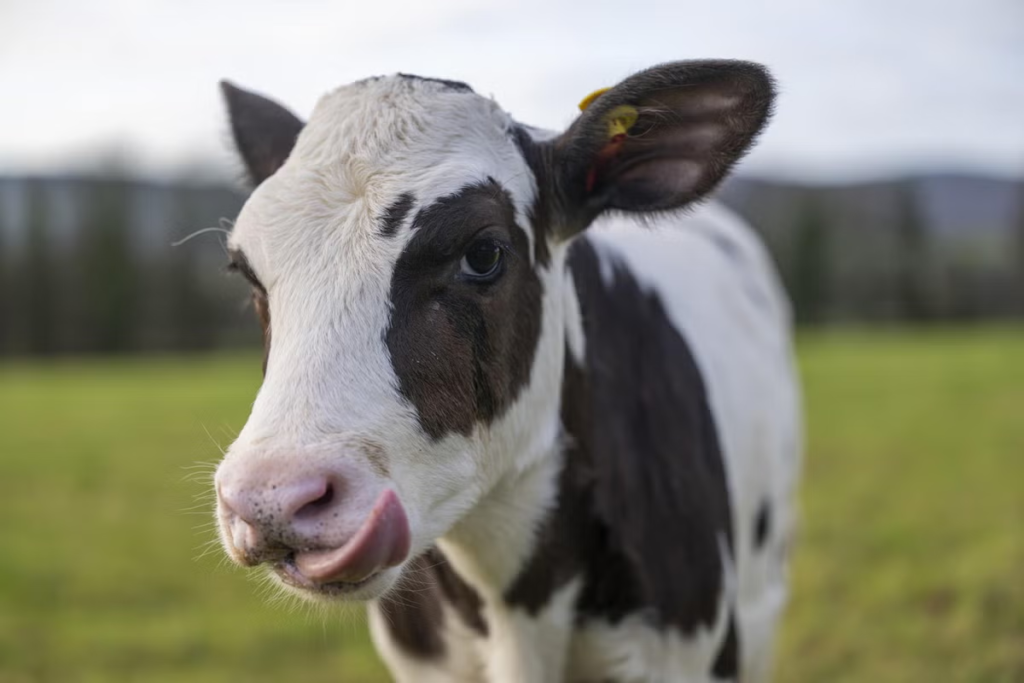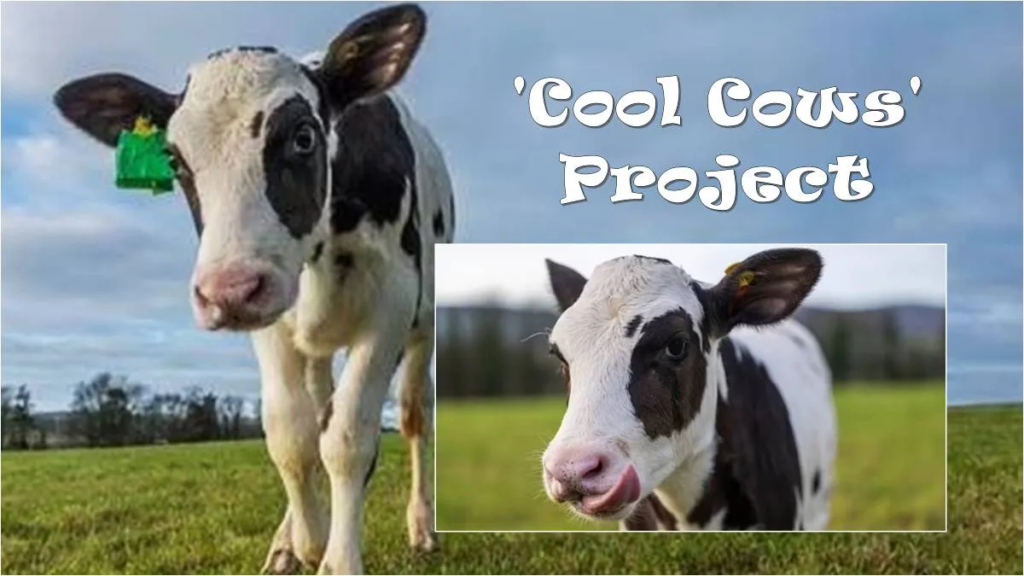The birth of Hilda, a calf conceived through in vitro fertilization (IVF) and bred to produce less methane, marks a transformative moment for sustainable farming.
This initiative, part of the Cool Cows project, aims to accelerate the breeding of cattle that contribute significantly less to greenhouse gas emissions, offering hope for the agricultural sector’s journey to net zero emissions.
Hilda, The Fart-Free Cow: ‘Cool Cows’ project aims to establish a hub of highly methane-efficient calves with Hilda as their first eco-friendly calf.
Over the past 52 years, the Langhill herd in Dumfries has been instrumental in studies aimed at improving cattle health and productivity and is currently focusing on breeding cows with genetic traits that results in lower methane emission
A Breakthrough in Sustainable Farming
Hilda, the first IVF calf in the Langhill herd, represents a leap forward in genetic innovation. Her conception, achieved by fertilizing her mother’s eggs in a lab, allowed scientists to speed up the breeding process by eight months.
This advancement is significant, as it doubles the rate of genetic improvement within the herd, enabling quicker selection and propagation of methane-efficient cattle.
Methane, primarily emitted by livestock through belching and flatulence, is a potent greenhouse gas, 84 times more impactful than carbon dioxide in the short term. While it dissipates within two decades, its role in exacerbating climate change has made it a key target for environmental policymakers.
Read : Half Marathon in Jilin Province of China Offers Cow as Top Prize
Agriculture is responsible for approximately 12% of the UK’s greenhouse gas emissions, with livestock methane accounting for the vast majority.
Read : New Zealand Removes Burp Tax on Livestock After Backlash from Farmers
The Cool Cows project, supported by Scotland’s Rural College (SRUC) and other partners, is working to establish a core group of methane-efficient calves. By leveraging genomic assessments alongside existing efficiency indices, scientists aim to identify elite heifers that can be bred to minimize emissions without compromising dairy production.
The Role of Agriculture in Emissions Reduction
The agricultural sector’s contribution to greenhouse gas emissions has long been a challenge in the UK’s climate goals. The National Farmers’ Union (NFU) has set a target for agriculture in England and Wales to achieve net zero emissions by 2040, with Scotland aiming for 2045.
These goals align with the UK’s broader commitment to achieving net zero emissions by 2050 and its pledge under the Global Methane Pledge to reduce methane emissions by 30% by 2030.
Despite these ambitious targets, the Climate Change Committee (CCC) has warned that progress in agricultural emissions reduction has been slow, necessitating urgent acceleration.

Initiatives like the Cool Cows project are crucial to bridging this gap. By focusing on genetic improvements in methane efficiency, the project seeks to address one of the most significant sources of agricultural emissions.
Beyond genetic advancements, other innovative measures are being explored to mitigate methane emissions. For instance, some British supermarkets have initiated schemes to incorporate seaweed into cattle feed, which has been shown to reduce methane production.
Additionally, projects involving air conditioning units and ventilation systems in cow sheds aim to capture and neutralize excess methane emissions.
Hilda’s Impact on the Future of Farming
Hilda’s birth is more than a scientific milestone; it symbolizes a paradigm shift in the dairy industry’s approach to sustainability. The Langhill herd, established in the 1970s and recognized as the world’s longest-running livestock genetics project, has been pivotal in studies on dairy production and greenhouse gas emissions.
From analyzing the effects of different diets to studying the impact of fertilizers on grasslands, the herd has provided invaluable insights into sustainable farming practices.
The Cool Cows project builds on this legacy, with Hilda’s birth heralding the establishment of a new generation of methane-efficient cattle. The implications extend beyond reducing emissions; the project also promises to enhance the overall efficiency and productivity of dairy farming.
By rapidly increasing the number of methane-efficient offspring, the initiative aims to create a sustainable model for livestock breeding that can be replicated globally.

Rob Simmons of the Paragon Veterinary Group emphasized the importance of genetic improvements in methane efficiency as a means to balance food production with environmental responsibility.
Stuart Martin of the Digital Dairy Chain, which funded the project, highlighted the broader significance of such initiatives in addressing the environmental impact of farming on a global scale.
The collaborative nature of the project, involving partners like SRUC, Paragon, and Semex, underscores the importance of multidisciplinary efforts in tackling climate change.
With funding from Innovate UK’s research and development grant competition, the project exemplifies how public and private sectors can work together to drive innovation in sustainability.
As global consumption of dairy products continues to rise, breeding livestock for sustainability is more critical than ever. Professor Richard Dewhurst of SRUC described Hilda’s birth as a “hugely significant moment” for the UK dairy industry.
By combining cutting-edge genomic assessments with traditional breeding techniques, the project is poised to make substantial contributions to global efforts in reducing agricultural emissions.

